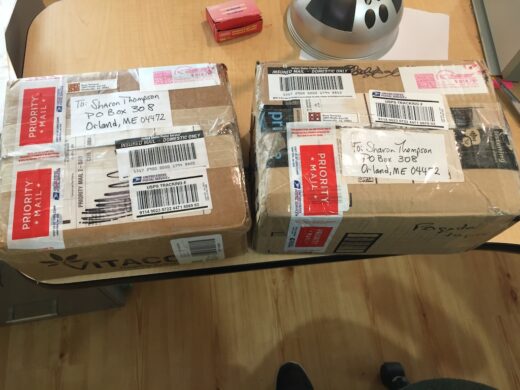
LHMP’s been super busy working on three remarkable new collections in recent months. As we’ve digitized, talked with footage participants, and catalogued, catalogued, catalogued, we’ve offered tastes of the newest collections through our Facebook page but our newest collections merit a fuller introduction. The first — the Tricia Scully Collection (1940-2008) — is a small but important addition to the LHMP archive: two films and accompanying unedited interviews with lesbian Girl Scouts and veterans.
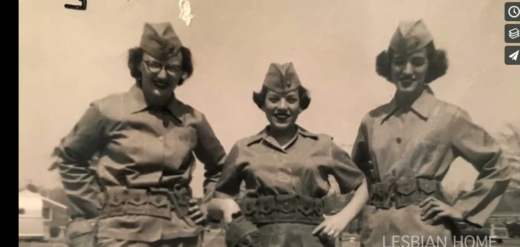
The films are “Serving with Pride” and “Girl Scouts — A Memoir.” Scully created both in collaboration with other residents of Florida’s Carefree, a lesbian retirement community. Accompanied with scrapbook photos and mementos, both films feature Tricia Scully’s interviews with Carefree residents, the first with lesbian military veterans, the second with former Girl Scouts. You’ll find links to them both at www.lesbianhomemovieproject.org/collection/tricia-scully/
Two other recent collections — Janet Prolman’s and Emily Greene’s — are over sixty pieces each. If you watched every piece in full, you’d be watching for days. Let’s say they average 60 minutes each. That’s 120 hours viewing time alone.
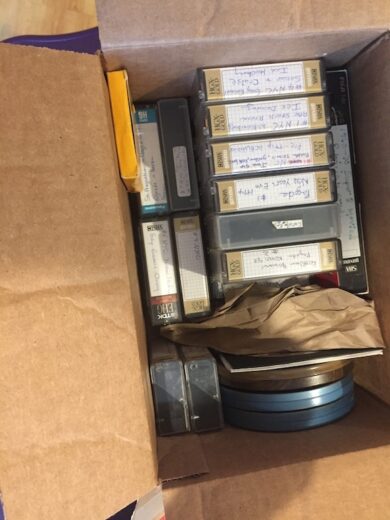
The Prolman and Greene collections both begin in the 1960s and continue into the early 2000s. Both include Super 8mm and videotape and open birds’ eye views on all manner of lesbian and feminist lives — activists, poets, military veterans, landykes, performers. They take viewers to demos and dances, concerts and camp-outs, small gatherings of friends and large public events. They also take them along on travels abroad, to Cuba, France, Germany, and the Netherlands. Documentation has required locating and talking with women from all over. Time consuming? You bet. No complaints, though. It’s been a great antidote to pandemic isolation.
The earliest pieces in these collections are the Super 8 and 8mm films. Emily Greene’s dad filmed the earliest footage in her collection so they are in part the portrait of a lesbian as a young woman. She didn’t start to shoot her own pieces until she moved to the St. Augustine lesbian community. Once she started, there was no stopping her.
Prolman began to film in high school where she had the extraordinary luck to study with Liane Brandon who later co-founded New Day Films.
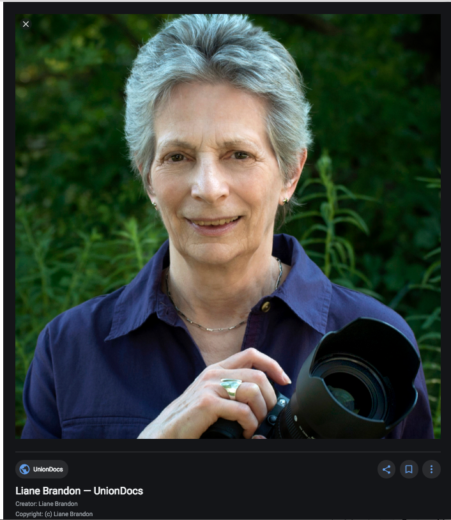
Inspired by Brandon’s film references, Prolman bought her own Super 8 camera with money she made working after school in her dad’s dry cleaning plant and started to film her friends. She made original, funny Super 8 films in college as well as high school.
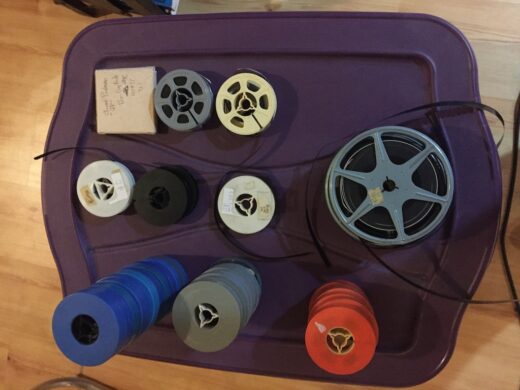
Later she worked with Project Mediation in North Carolina and moved into videotape and a full-on documentary approach. Her extensive collection includes footage from Cuba, Germany, Massachusetts, New Hampshire, New York, and North Carolina.
Emily Greene’s collection features St. Augustine’s The Pagoda, Alabama’s Alapine, and visits to New York, Paris, and Amsterdam where she mostly focused on filming gay games (with emphasis on ballroom dance).
Scully, Greene, and Prolman all paid close attention to how they used the camera. In their pieces, there’s no just putting the camera down on a stool and accidentally filming an entire event at waist level. Got to love weird effects like that, and I really do, but these three were very intentional about what they shot. Scully mastered the art of editing as well as taping, assembling on-camera interviews, group discussions, snapshots, and other memorabilia into formal documentaries. Prolman and Greene mainly edited in their cameras, somehow always keeping in mind of their vision how their close-ups, pans, and zooms would add up to a whole, be it 2 hour competition demo or a two minute comic vignette.
Each time I scroll through these collections, I notice something new. You will too. Dip in. And if you see something you think we should highlight here or on social media or you’d like to research further for a special project, give us a holler at info@lesbianhomemovieproject.org